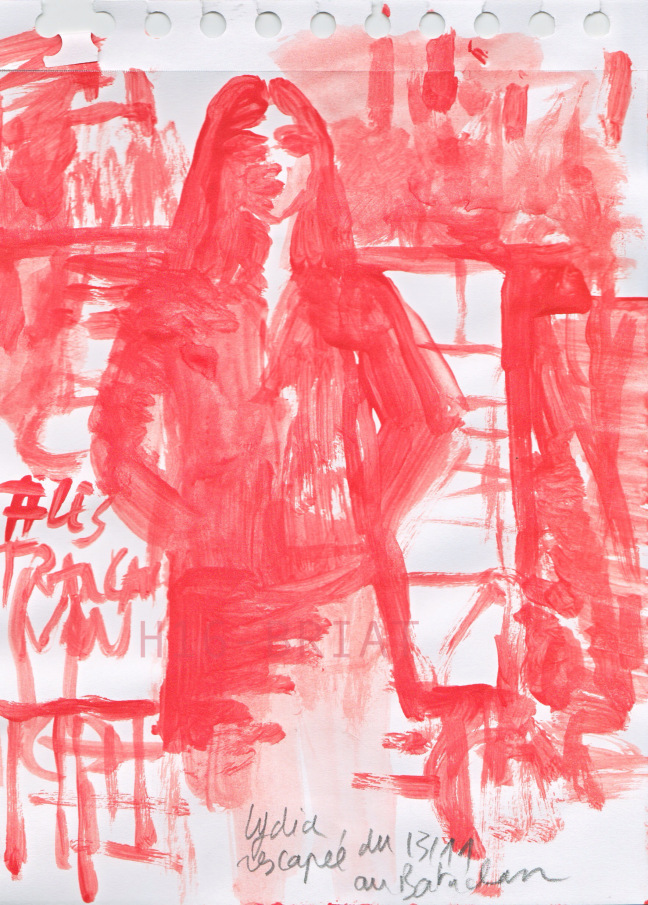 Pour aller sur le blogue de l’artiste, cliquez sur l’image
Pour aller sur le blogue de l’artiste, cliquez sur l’image
Je suis peintre, je vis en France.
Depuis 1995, je réalise une peinture chaque jour, en relation avec les actualités.
Aujourd’hui cela représente 10 500 pièces.
Mon sujet c’est de peindre les images de la presse, en tant que monochromes en acrylique ou gouache, sur un carnet de 14×18 cm (5,5 x 7 pouces).
A chaque saison je crée une nouvelle couleur, 4 par année, ce qui fait 68 nuances pour un projet de 17 ans.
Musées et galeries, collectionneurs, bloggeurs, tweets, partages sur le web, commentaires…
Vous êtes les bienvenus !
Michel Briat : I’m a french painter.
Since 1995, I do a painting each day, in relation with world news.
Today this represents 10 500 pieces.
My subject is newspaper pictures, in acrylic or tempera monochromes, on a sketchbook paper of 14×18 cm
(5,5 x 7 inches).
Each season has a new color, 4 for a year, that makes 68 shades for a 17 years project.
Museums & galleries, collectors, blog-sharing, tweets, embeddings, comments …You’re welcome !
Contact :
briat.michel@gmail.com
ArtePsy
art-thérapies
psychothérapies
Se soigner grâce à l’art c’est possible
A QUI S’ADRESSENT CES THÉRAPIES ?
Mon expérience d’art-thérapeute en institution pendant plus de 17 ans m’a souvent mis en contact avec
des adolescents et enfants, qu’ils souffrent de :
• troubles du comportement alimentaire
• dépendances, addictions diverses
• phobies scolaires
• précocité, troubles de l’attention, hyperactivité
Les adultes souffrant de
• dépression
• troubles bi-polaires
• dépendances et addictions diverses
• troubles du comportement (TOC, phobies…)
